| Zeitschrift Umělec 1999/5-6 >> 1990s: Catastrophe and Hedonism | Übersicht aller Ausgaben | ||||||||||||
|
|||||||||||||
1990s: Catastrophe and HedonismZeitschrift Umělec 1999/5-601.05.1999 Jekatěrina Djogoťová | russia | en cs |
|||||||||||||
|
The 1990s in the Russian art scene seem like one never-ending decline. No activity lasted more than two seasons (either due to lack of money, a ban or inability of the organizers). That what survived - rely ng on the state or Western grants - soon began to reveal the nakedness of its intellectual incapacity. Those events turned into bureaucratic feed-racks of the Soviet model whose one and only aim was to organize foreign business trips for their management. The country itself did not show any interest in modernist forms and values represented by modernism as it was more interested in bare survival. Modern art in new Russia was neither capable to take over the power nor to fill up the void of dignified and meaningful marginality as it only cared about its bare survival. There are so few artists that you have to grab them by their sleeves so that they don’t go away or change their occupation. Those who left the country, usually did not get better careers and they were not interested in uniting the paths of modern Russian art which was the case of the Chinese community for example. A vast majority of the thin Russian community of critics and curators spend their time simulating the existence of an art scene as the savior of their professions is depending on it from both representatives of the country and “heavenly representatives“ abroad. Simply put the point is to survive.
On the other hand, art anywhere in the world, if going through a crisis when nobody was demanding it, managed to survive quite pleasantly due to its creative approach to acquiring new organizational space in media markets and transformed itself into more or less easily recognizable and competitive esthetic (a lot of this was immediately ready for use by MTV). Art’s success was inconsiderable and did not bring huge financial profits as was the case in the 1980s. At the same time, however, art provided quite happy and comfortable way of life full of business trips. This is precisely one of the most significant features of the 90s esthetic, oriented towards nomadic hedonism. This esthetic was not formally announced yet it has managed to slowly infiltrate the artistic context and approved itself to be dominant during such megashows as Berlin’s Art Forum, Documenta in 1997, 1998 Berlin Biennial and this year’s Venice Biennial. The difference between this esthetic and previous art is felt intuitively by many but nobody has yet given an official title to this trend. Everybody is trying to come up with their own version as he/she is more interested in subjective interpretation than patenting a definition. We are thus witnesses of word inflation which alone is also part of the 90s esthetic. “Operational esthetic“, “communication esthetic“, “postmodernism“ of course, “postdeconstruction“, “neoglobalism“, “sensation“, “new sensitivity“, “film culture“, etc. As for me, I could offer “potential art“, “post-teleology“, “drug esthetic“, “humanization of art“ and finally “surviving“. The problem of a title will perhaps fade out itself as soon as this decade’s title is changed to “pre-war“ or something like that. Currently, art considers itself hedonistic, focused on collecting impressions from the world but not on their ascetic assessment. Change of Definitions So today’s obsolete expressions go as follows: fashion, strategy, text, interpretation, representation, structure, hierarchy. Whereas in are now: reality, entropy, chaos, openness, redundancy, nomadism, risk, idiocy, communication, possibility, merging. The ideal piece of art works with the broadest context using the least binding or strange gesture possible: a bubble filled with gas, bubbles on lips, a bladder (also a bubble), a human-bubble. When it comes to means and media, materials and original vs. appropriated character of the work, there is absolute tolerance today or - more precisely put - indifference. This issue ceased to be relevant just as it ceased to be relevant ages ago whether a painter mixes his/her paints himself/herself or not. Division into painting, sculpture and graphics, as well as image, performance and ready-made ceased to work for good. 1990s proper division would be into image, space and gesture. Paintings and any imagery is understood without their link to their real origin - dominant among them are video and film. Spaces are “total installations“ and also - which is more often the case - exhibition spaces reconstructed in the manner of sensualist attraction responding to your presence in a certain way, plus various bodily shows, pseudo-social and quasi-curatorial projects (handing out food or condoms to all visitors) and also projects presenting a riddle: “What has the artist added to this forest (river, house)...?“ Maybe the artist has done nothing and only makes fools out of us. All of these types of projects embrace totalitarian ambition to seize all of the viewer’s time and space and his interests by mastering all means of mass culture and mass communication, especially “absent mindness“ of novices. Rejecting elitism in the esthetical, formal area means denying reductionism and the principle of “less is more“, followed by the ban of thematizing “death of art“ on which all of modernism is based on. This also means denying the basis of modernism - a critical origin. If art ended with critic of itself (it could have as well dealt with it over the past century), it also searches for certain “transcritical“ or “postcritical“ position. We are thus witnesses of its inspection of corresponding postcritical spaces which seem to represent an alternative to textual space, dominating throughout the 20th Century and thematizing possibilities of representation (violence, pain, confusion, mental illness), causal contexts (accidental event, murders without motivation, the world of fantasy), absolute immediate reality (pornography) and forms of manipulation (psychotechnology and genetic engineering). All of the above spaces actively emerge in visual arts, especially film (for example in Lars von Trier pictures which are some of the few examples of intentional and cold-blooded construction of this trans-textual esthetics, another title by the way). Russia: the only artistic reality Russia’s esthetic problem during the 1990s lies in the fact that the country itself has been repeatedly perceived as a post-critical, post-textual space. Ideology, it seemed, went down with Soviet hegemony and we could start living as people. The artist, however, did not find the sought for “life“ in himself, instead he found it in Russia. This was the reason for the unusual excitement at the beginning of the 1990s (its echo may be heard till this day) when Russia was said to be a space full of authenticity, changes, a place where an artist intensively participated in life - in contrast to mere observing the events, behavioral patterns perceived as Western and expatriot (previous generations of artists were ethically and esthetically oriented towards emigration which usually was not emigration “into life“ but “from life“). A whole new myth was built in front of our eyes - it was not an image of a country that does not really exist (Tchadayev), but a fanatic dream of a country (ignoring its own status of a dream) that is the only one bearing features of true reality. Creative activity was invested more into Russia itself than arts, or into ideology to put it in better way: we will have normal lives, we will create a standard, design of life, public life. It seemed that an esthetic gesture put directly into practice may help art win the battle. Excessive visits to night clubs as an ideological gesture connecting something important with future depending on it, affected analysis of life as the most important esthetic problem, fall of art into the realm of political or commercial design and proud replacement of reflexive activity with journalistic one, focusing on short description of reality, on mimicry of the language of the street or vice versa on repainting phenomena of “the new way of life“ using postmodern terminology - these all are the same processes. They are always based on fascination originating in both charm and crisis. Also qualities of the only possible correct way of life of the right individual are ascribed to such processes. Hedonism is in principle catastrophic as it is dangerously close to reality. This risk, however, did not bring Russia any interesting esthetic results as the artist was experiencing it on the safer side - on the side of life style, not the side of art. There are, of course, exceptions - some people remained on the dangerous side, open to reality and ready to survive any consequences of any further step. Escape to the 21st Century The second problem of 1990s Russian art consists in its at first naive belief that the world became post-binary (the Berlin Wall has been taken down), non-hierarchic, communicative and open. Why not enjoy a nice, long awaited life then - especially since we’re promised that while we pick some flowers, the bus will wait for us? We may say that Russian art disarmed itself unilaterally only to understand that non-hierarchic reality is an illusion - the will to the absolute occurred both in Russia and the West. Therefore it seems to be quite typical to me that defending a friendly world of communication in which a norm and all the rest blend together in ecstasy. This is similar to the beginnings of [Moscow’s contemporary art magazine] Khudozhestveny Zhurnal which has been in the recent issues preaching not the Second but the Third World (for example in recent text by Alexander Brenner) while it is not even attempting at synthesis of the first two worlds. Rejecting centuries of efforts for synthesis and conciliation of antitheses would represent an escape from a dead-end street of tradition Russian identity for me (in which all of us remain stuck) and also from a dead-end street of the 1990s on an international scale in which the art world might got stuck, slowly choking on the wave of entropy. Nevertheless, despite the fact that 1990s are not a dead-end street, we will have to leave this period very soon - the lights are about to go out. Translated with permission from Khudozhestveny Zhurnal.
01.05.1999
Empfohlene Artikel
|
|||||||||||||
|
04.02.2020 10:17
Letošní 50. ročník Art Basel přilákal celkem 93 000 návštěvníků a sběratelů z 80 zemí světa. 290 prémiových galerií představilo umělecká díla od počátku 20. století až po současnost. Hlavní sektor přehlídky, tradičně v prvním patře výstavního prostoru, představil 232 předních galerií z celého světa nabízející umění nejvyšší kvality. Veletrh ukázal vzestupný trend prodeje prostřednictvím galerií jak soukromým sbírkám, tak i institucím. Kromě hlavního veletrhu stály za návštěvu i ty přidružené: Volta, Liste a Photo Basel, k tomu doprovodné programy a výstavy v místních institucích, které kvalitou daleko přesahují hranice města tj. Kunsthalle Basel, Kunstmuseum, Tinguely muzeum nebo Fondation Beyeler.
|

























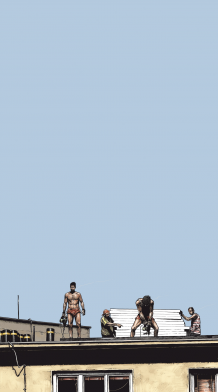




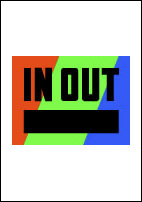
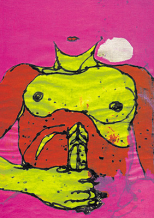
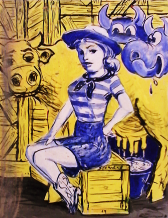
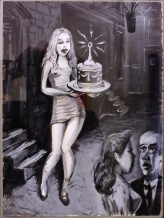


 We Are Rising National Gallery For You! Go to Kyjov by Krásná Lípa no.37.
We Are Rising National Gallery For You! Go to Kyjov by Krásná Lípa no.37.
Kommentar
Der Artikel ist bisher nicht kommentiert wordenNeuen Kommentar einfügen